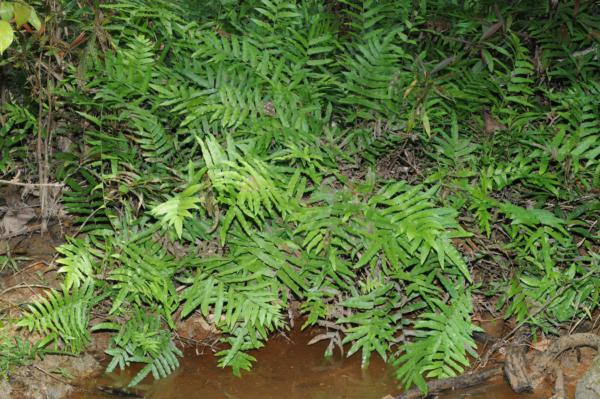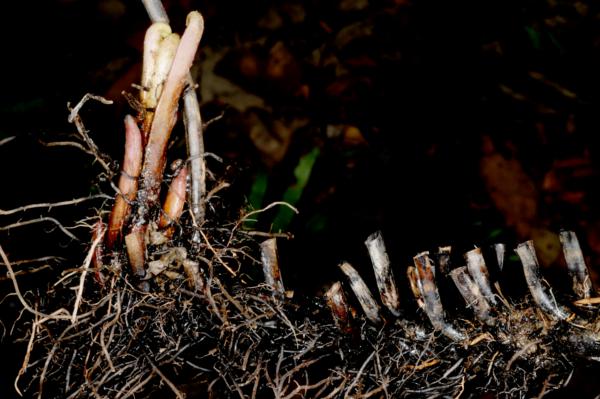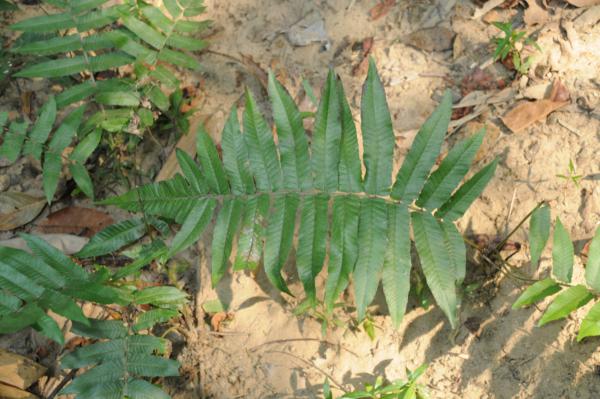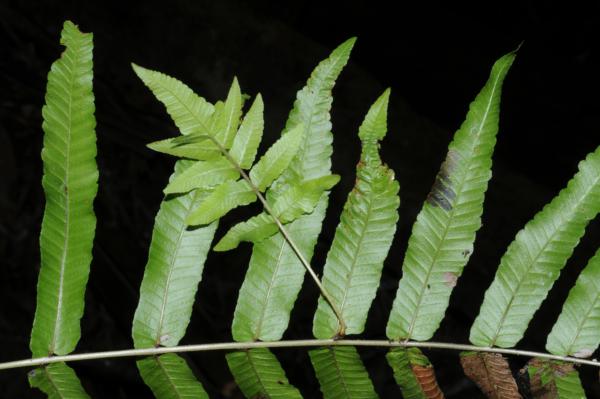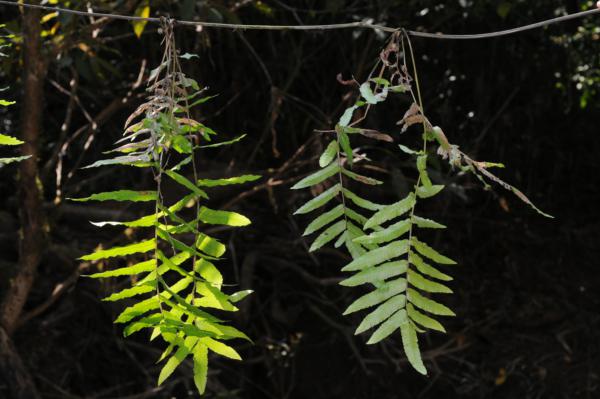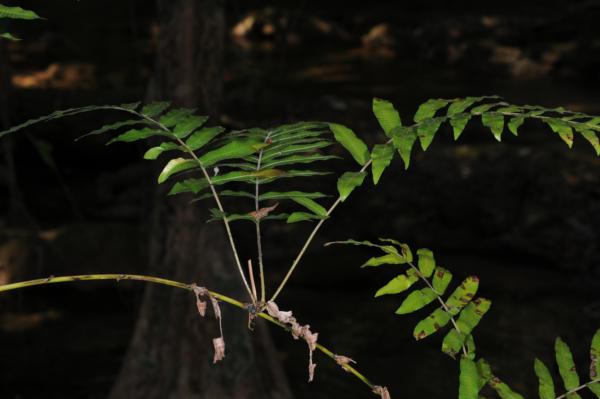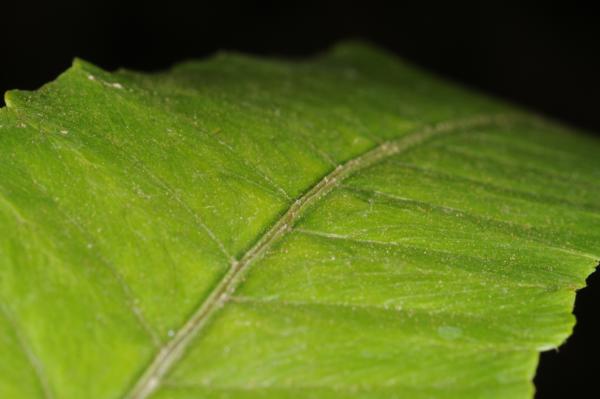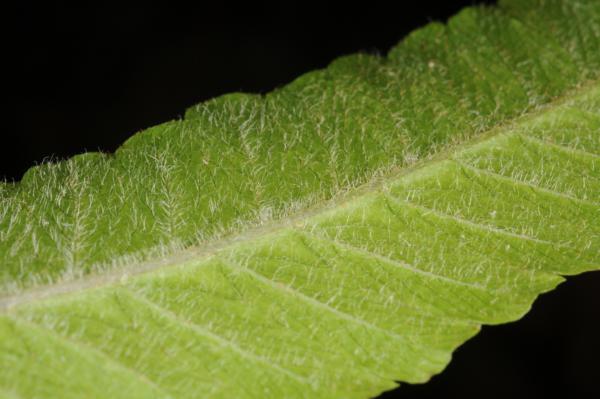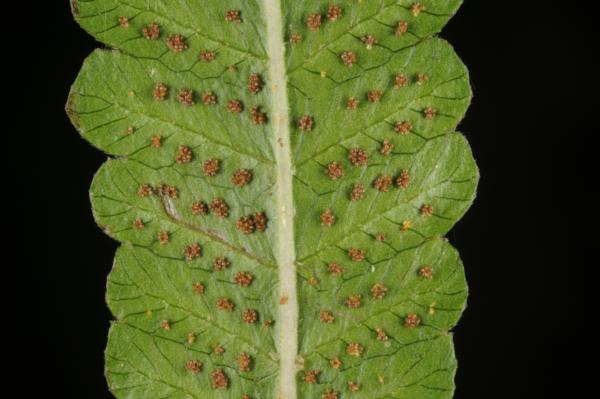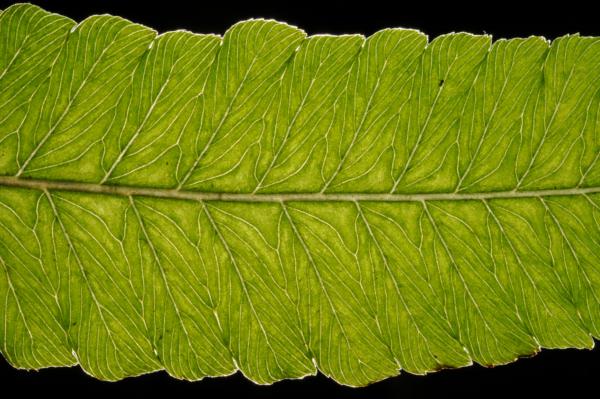
Cyclosorus prolifer (Retz.) Tardieu ex Tardieu & C.Chr.
Nomenclature
Cyclosorus prolifer (Retz.) Tardieu ex Tardieu & C.Chr., Notul. Syst. 7: 76. 1938; Tardieu & C.Chr., Fl. Indo-Chine 7(2): 389. 1941. – Hemionitis prolifera Retz., Obs. 6: 38. 1791. – Meniscium proliferum (Retz.) Sw., Syn. Fil.: 19, 206. 1806; K.Iwats., J. Jap. Bot. 38: 315. 1963; Tagawa & K.Iwats., Fl. Thailand 3: 435. 1988; Boonkerd & Pollawatn, Pterid. Thailand: 224. 2000; Newman et al., Checkl. Vasc. Pl. Lao PDR: 32. 2007. – Goniopteris prolifera (Retz.) Fée, Cr. Vase. Br. 1: 105. 1869; Bedd., Handb. Ferns Brit. India: 296, f. 153. 1883. – Ampelopteris prolifera (Retz.) Copel., Gen. Fil.: 144. 1947; Holttum, Rev. Fl. Malaya ed. 1, 2: 299. 1955 [‘1954’]; Holttum, Dansk Bot. Ark. 23: 233. 1965; Holttum, Fl. Males., Ser. II, Pterid. 1:387, f. 7d–f. 1982 [‘1981’]. Type: Koenig, S. India (GOET).
Description
Rhizome creeping, 4–10 mm diam.; scales ovate-subtriangular, up to 1.5 x 1 mm, brown, glabrous or hairy at margin. Stipes (4.4–)20–60 cm long, less than 5 cm long in young but fully soriferous frond, glabrous or hairy, scaly at base. Laminae (14–)55–110 by (7–)14–20(–30) cm, oblong-lanceolate; rachis proliferous, bearing a tuft of fronds and rooting at several places, with simple or bifurcate hairs; lateral pinnae 6–20 pairs, shortly stalked, linear-lanceolate, moderately acute to acute at apex, truncate at base, very shallowly incised, (3.5–)10–20 by 0.6–2 cm; lobes rectangular, oblique, truncate at apex; herbaceous, dark olive-green when dry; veins pinnate, veinlets about 10 pairs, 5–7 pairs, uniting to form a goniopteroid venation. Sori oblong or elongate along united veinlets, exindusiate; sporangia glabrous .
Distribution in Thailand
NORTHERN: Chiang Rai, Chang Mai; EASTERN: Chaiyaphum, Udon Thani; SOUTH-WESTERN: Kanchanaburi; CENTRAL: Saraburi.
Distribution in Laos
Champasak.
Distribution in Cambodia
Unspecified
Wider Distribution
Tropics and subtropics throughout the Old World.
Ecology
On moist banks near streams usually in open places or in light shade at low to medium altitudes.
Proposed IUCN Conservation Assessment
Least Concern (LC). This species is widespread and not under any known threat.
Notes
The smaller sizes in the description are mainly due to the fact that the bulbils can root and form independent fertile plants at a very small size.
Voucher specimens - Thailand
Middleton et al. 4773, Kanchanaburi, Thung Yai Naresuan Wildlife Sanctuary (E); Middleton et al. 4770, Kanchanaburi, Thung Yai Naresuan Wildlife Sanctuary (E).
Voucher specimens - Laos
Maxwell 98-144, Champasak (CMU).
Habit
Rhizome
Frond
Vegetative bud.
Elongated rachis with young plantlets
Elongated rachis with plantlet
Upper surface of frond
Lower surface of young frond
Sori
Venation
Site hosted by the Royal Botanic Garden Edinburgh. Content managed by Stuart Lindsay, Gardens by the Bay, Singapore and David Middleton, Singapore Botanic Gardens. Last updated 24 January 2012
